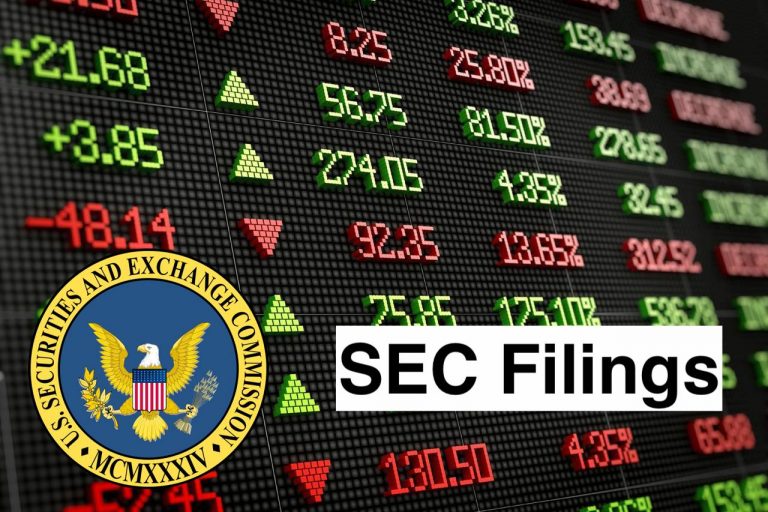
STEALTH TECHNOLOGIES, INC. (OTCMKTS:STTH) Files An 8-K Bankruptcy or Receivership
ITEM 1.03 BANKRUPTCY OR RECEIVERSHIP
On January 27, 2020 (the “Petition Date”), Stealth Technologies, Inc.’s (the “Company”), a Nevada corporation, wholly owned subsidiary, Stealth Technologies, Inc. (the “Debtor”), a Florida corporation, filed a voluntary petition under chapter 7 of the United States Bankruptcy Code (the “Bankruptcy Code”) in the United States Bankruptcy Court for the Middle District of Florida, Tampa Division (the “Court”), commencing its bankruptcy case (the “Bankruptcy Case”). Richard M. Dauval has been appointed by the Bankruptcy Court as the chapter 7 trustee in the Bankruptcy Case and the case number for the Bankruptcy Case is 8:20-bk-00645.
Court filings and other information relating to the Debtor’s Bankruptcy Case are available at https://pcl.uscourts.gov/pcl/pages/search/results/cases.jsf?sid=e28d82954493422baf55989985df3146.
ITEM 2.04 TRIGGERING EVENTS THAT ACCELERATE OR INCREASE A DIRECT FINANCIAL OBLIGATION OR OBLIGATION UNDER AN OFF-BALANCE SHEET ARRANGEMENT
The commencement of the Chapter 7 Case described in Item 1.03 of this report constitutes an event of default under certain of the Company’s debt instruments, including each of the unsecured Convertible Promissory Notes further detailed in the Company’s prior 8-K, 10-Q and 10-K filings, which results in automatic acceleration of the Company’s obligations under such debt instruments.
ITEM 7.01 REGULATION FD DISCLOSURE
On January 30, 2020, the Company issued a press release announcing the filing of the Bankruptcy Petition. A copy of the press release is attached to this report as Exhibit 99.1 and incorporated herein by reference.
The information furnished to Item 7.01, including Exhibit 99.1, shall not be deemed “filed” for purposes of Section 18 of the Securities Exchange Act of 1934, as amended (the “Exchange Act”), is not subject to the liabilities of that section and is not deemed incorporated by reference in any filing under the Securities Act of 1933, as amended (the “Securities Act”), unless specifically identified therein as being incorporated therein by reference.
Forward-Looking Statements and Limitation on Representations
This report contains certain statements that are, or may be deemed to be, “forward-looking statements” within the meaning of Section 27A of the Securities Act and Section 21E of the Exchange Act. All statements, other than statements of historical facts, that address activities, events or developments that the Company expects, believes or anticipates will or may occur in the future are forward looking statements. These forward-looking statements are based largely on the Company’s current expectations and projections about future events and financial trends affecting the financial condition of its business. These forward-looking statements are subject to a number of risks, uncertainties and assumptions, including, among other things, the risk factors discussed in the Company’s most recent Annual Report on Form 10-K as well as in other reports filed from time to time by the Company with the Securities and Exchange Commission, most of which are beyond its control. The words “believe,” “may,” “estimate,” “continue,” “anticipate,” “intend,” “plan,” “expect,” “indicate” and similar expressions are intended to identify forward-looking statements. Although the Company believes that the forward-looking statements contained in this report are based upon reasonable assumptions, the forward-looking events and circumstances may not occur and actual results could differ materially from those anticipated or implied in the forward-looking statements.
These forward-looking statements may be affected by, among other things, (i) the Company’s ability to obtain approval with respect to motions in the Chapter 7 Case, the Bankruptcy Court’s rulings in the Chapter 7 Case and the outcome of the Chapter 7 Case in general; (ii) risks associated with third-party motions in the Chapter 7 Case, which may interfere with the Debtors’ ability to achieve its anticipated results; (iii) the potential adverse effects of the Chapter 7 Case on the Debtors’ liquidity, results of operations or business prospects; (iv) the ability to execute the Company’s business and restructuring plan; (v) increased legal and advisor costs related to the Chapter 7 case and other litigation and the inherent risks involved in a bankruptcy process; and (vi) other factors disclosed by the Company from time to time in its filings with the SEC, including those described under the caption “Risk Factors” in the Company’s Annual Report on Form 10-K and Quarterly Reports on Form 10-Q. The Company does not intend to publicly update or revise any forward-looking statements as a result of new information, future events or otherwise, except as required by law.
ITEM 9.01 FINANCIAL STATEMENTS AND EXHIBITS.
(d) Exhibits.
| 99.1 | Press Released dated January 30, 2020 |
STEALTH TECHNOLOGIES, INC. Exhibit
EX-99.1 3 ex99-1.htm Exhibit 99.1 Stealth Technologies Inc. Announces Update Pertaining to its wholly owned subsidiary Florida Subsidiary Files Chapter 7 Bankruptcy LARGO,…
To view the full exhibit click here
About STEALTH TECHNOLOGIES, INC. (OTCMKTS:STTH)
Stealth Technologies, Inc., formerly Excelsis Investments, Inc., is engaged in identifying and capitalizing on emerging technology and associated markets. The Company’s operations are focused on product development and sales in the Personal Financial Protection and Data Protection businesses. Its consumer product, the Stealth Card, is designed to protect the enabled card acceptance Europay, MasterCard and Visa (EMV) chip in a consumer’s credit card from electronic pickpocketing that uses a smartphone, credit card reader or radio-frequency identification (RFID) antenna to remotely access data stored on the consumer’s EMV Smartchip. The data includes an individual’s credit card number, name and provides the potential criminal with access to a card’s EMV frequency. The Company sells its products to both the consumer and business-to-business markets. It sells products to consumers through its e-commerce Website. Its business-to-business sales take place at the customer’s location.




